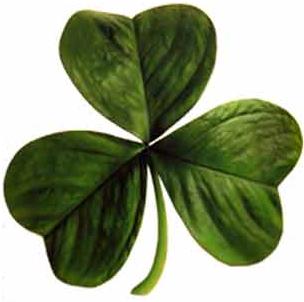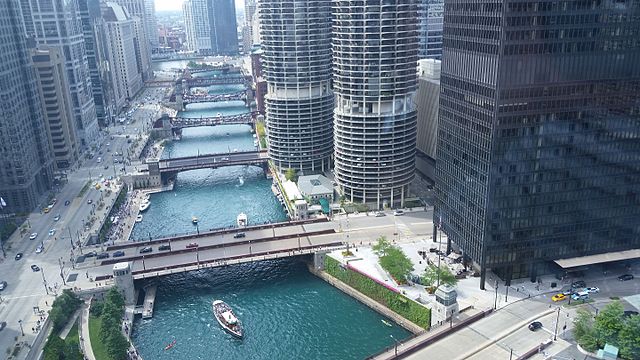Last updated on May 10th, 2021
St Patrick’s Day is celebrated each year on March 17th. The day is the observation of the death of St Patrick, the patron saint of Ireland. With these 30 St Patrick’s Day facts, let’s uncover more about this great festival which is celebrated all over the world.
1. St Patrick was born in 385 AD in a place believed to be Banna Venta Berniae, a town in Roman Britain (his exact place of birth is however uncertain). He died during the fifth century in the year 461 AD at Saul, Downpatrick, Ireland.
2. St Patrick’s Day commemorates the arrival of the Christianity in Ireland. It happened in the year 432.
3. Patrick was born to Roman parents (Calpurnius and Conchessa). He was not Irish, instead, he was English. His given name was Maewyn Succat. Thus, technically we would be celebrating “Maewyn Day” instead of the “St Patrick’s Day” if his name was not changed. He wrote a book–Confessio–during his last years.

4. At the age of 16, St Patrick was kidnapped and was taken to Ireland. He was kidnapped by a group of Irish raiders who were attacking his family’s estate. He worked there for 6 years tending sheep and then escaped and became a priest.
5. St Patrick’s Day is also known as the ‘Feast of Saint Patrick’ and the ‘Day of the Festival of Patrick’. Patrick studied and received his training in the religion for more than 12 years after he escaped from the captivity of the Irish raiders.
6. Saint Patrick used Shamrock (a young sprig of clover) to teach the pagans about the Holy Trinity. The shamrock is now the official flower of Ireland. It is associated with St Patrick.

7. St Patrick’s Day has been observed by the Irish as a religious holiday for more than 1,000 years.
8. ‘Blue’ was the color associated with St Patrick before the adoption of green as the color for the festival. The color blue was featured both in the royal court and on ancient Irish flags. In 1798, the color green became officially associated with the day.
9. The first Patrick’s Day parade was held in Waterford (the oldest and the fifth most populous city in the Republic of Ireland) in 1903.
10. More than 100 Saint Patrick parades are held across the United States. Almost 12% of Americans claim Irish ancestry. More people of Irish ancestry live in the United States than in Ireland.
11. One claim in history deeply associated with St Patrick is that he banished all the snake from Ireland. However, this claim is not true because it has been discovered that the chances of survival of snakes in Ireland are minimal because of the cold conditions of the region. However, some say that the snakes represent the pagans he converted to Christianity.
12. In 1762, the first New York City parade took place. With over 150,000 participants, the St Patricks Day parade in New York is the world’s oldest civilian parade and the largest in the United States. And more than 3 million spectators line the parade route which is 1.5 miles long. The parade takes more than 5 hours to come to an end.
13. On this day, Catholics attend church in the morning and then watch a St Patrick’s Day parade.

14. The Chicago River (the system of rivers and canals has a combined length of 156 miles) is dyed green on this day (since 1962). However, the first year when the river was dyed green, 100 pounds of vegetable dye was released into the river. This kept the river green for almost a week. However, today, they use only 40 lbs of the green dye to color the river for the day to keep the environmental damages in check. Now, the dye lasts for about 5 hours.
15. Guinness (an Irish dark beer that originated in the brewery of Arthur Guinness) sale almost doubles on St Patrick’s Day as compared to the regular days when 5.5 million pints of it is sold.
16. The 200th anniversary of St Patrick’s Day was marked in Sydney Opera House by making it green.
17. The first St Patrick’s Day celebration in the United States was held in Boston in 1737.

18. On this day, people usually eat corned beef and cabbage, and they wear green. However, corned beef is an English dish and not Irish.
19. Wearing green attire or shamrock is also a St Patrick’s Day tradition. It is one of Irish tradition to pinch someone who is not wearing green on the day.
20. Between 1903 and 1970 most pubs in Ireland were closed because St Patrick’s Day was a religious holiday. However, the holiday was reclassified as a national holiday and the nation started drinking even on this day. Drinking on this day has become a strong St Patrick’s Day tradition.
21. St Patrick’s Day is a national holiday in both Ireland and North Ireland. It is a provincial holiday in the Canadian province of Newfoundland.
22. World’s shortest St Patrick’s Day parade is held in Arkansas, which runs for a total of 98 feet.
23. More than 450 churches are named for St Patrick in the United States. And 5.5 million tourists visit St. Patrick’s Cathedral in New York City every year.

24. St Patrick’s Day is one of the most celebrated festivals in the world. Others may include La Tomatina — Buñol, Spain; Holi — Celebrated by Hindus Around the World; Carnaval — Rio de Janeiro, Brazil; Lantern Festival — Pingxi, Taiwan.
25. St Patrick’s Day parades began in North America in the 17th century but they did not spread to Ireland until the 20th century.
26. St Patrick’s Day is not celebrated on March 17 when it falls within the Holy Week (the week just before Easter, Holy Week in 2018 will begin on Sunday, 25 March and ends on Saturday, 31 March). This once happened when the day coincided with Palm Sunday in 1940 and then again in 2008. The celebration of the Day is adjusted in such a scenario. In 1940 it was observed on 3 April and in 2008 it was observed on 15 March. Now, until 2160, St Patrick’s Day will not fall under the Holy Week.
. . . continue reading on the next page.
